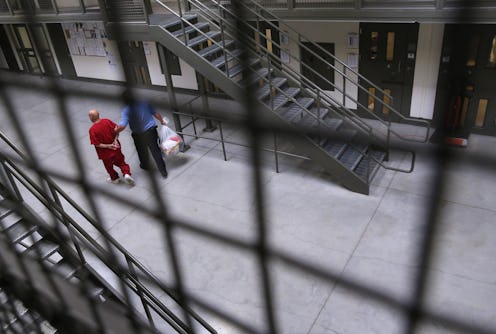News
Why Don't Compassionate Release Programs Work?
In August, United States attorney general Eric Holder changed the guidelines on who qualifies for the federal government's so-called compassionate release programs, in an attempt to control the size of America's rapidly-ballooning prison system. Now, it's not just terminally-ill prisoners who can petition for an early release; prisoners with debilitating conditions, or ones who just need to take care of ill family members can also apply now, as can those who are just plain old. It seems like a common-sense way of treating non-violent offenders humanely, but in reality, the program is mired in bureaucratic struggles, and is the subject of one of ProPublica's latest investigations.
Take, for instance, the case of Veronica Barnes. Barnes was serving out a six-year sentence for the nonviolent crime of possessing methamphetamine, with intent to distribute. About halfway through her term, Barnes found out that her husband, with whom she had young children, was dying of pancreatic cancer. He had months left to live, and there was no one else to look after her kids. She applied for compassionate release, and seemed like an ideal candidate, complete with the support of her prosecutor and her warden. ProPublica reports that in prison, "she saw her children every week, completed a parenting class, took college courses, and graduated from a drug rehab program."
Barnes received a response 15 months later denying her request. Her husband had died eight months prior. Her kids were living with strangers. The Bureau of Prisons general counsel and assistant directory, Kathleen Kenney, wrote that, "Review of Ms. Barnes’ past history raises concern as to whether she will be able to sustain the stresses of sole parenting and employment while remaining crime-free." There was no guarantee that she wouldn't re-offend, so there was no reason to let her out.
Despite the change in regulations, the release rates for nonviolent offenders are very low: the've grown at a rate of about ten a year since 2011, with 50 being released in 2013. (The director of the Federal Bureau of Prisons, Charles Samuels Jr., acknowledged that the bureau thinks the impact of the attorney general's changes "will be modest."
Part of the problem might be that prison officials are the ones deciding whether inmates will have a chance to ask a judge for an early release. Advocates say this stacks the deck against prisoners, because the officials' jobs are to keep them incarcerated. They want an end to "jailers acting as judges," and instead want their clients to have an open appeals process in front of an impartial judge, who may be more accurately able to assess whether they continue to pose a risk.
"The Bureau of Prisons should be letting judges have the opportunity to decide every time extraordinary and compelling reasons come to their attention, and [they are] not doing that,” said federal public defender Steve Sady. “We believe that, under the statute, the sentence is for the judge to decide."
But this is unlikely to change. The Federal Bureau of Prisons says that its authority to decide which requests deserve to be passed along to a judge, and which do not, was granted to it by congress:
Congress gave the BOP authority to ask a court to grant an inmate's compassionate release request, prior to completion of the inmate's sentence, for extraordinary and compelling circumstances. Within the BOP's authority under the existing legal framework, the updated policy provides circumstances in which the BOP will consider compassionate release requests.
It seems that prisoners' rights advocates should refocus their efforts on congress, and changing the pipeline through which these requests pass. Of course, there is another, even more logical route: many of these cases, like that of Veronica Barnes, are the result of misguided laws that prescribe mandatory minimum punishments for nonviolent offenses. And that's the area of law where there's the most work to be done.
